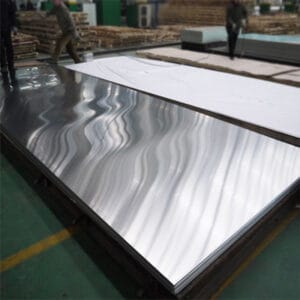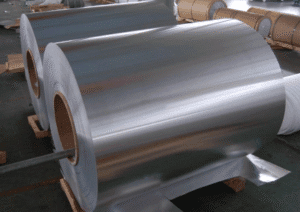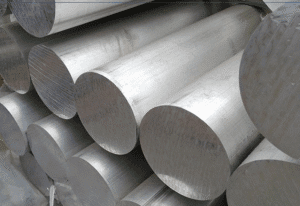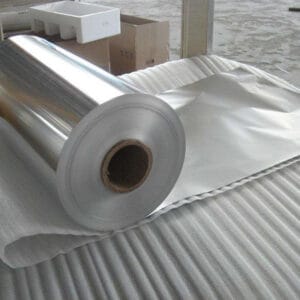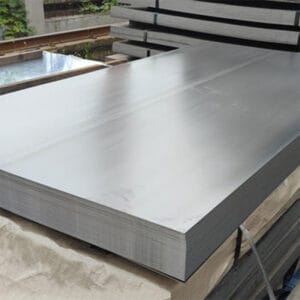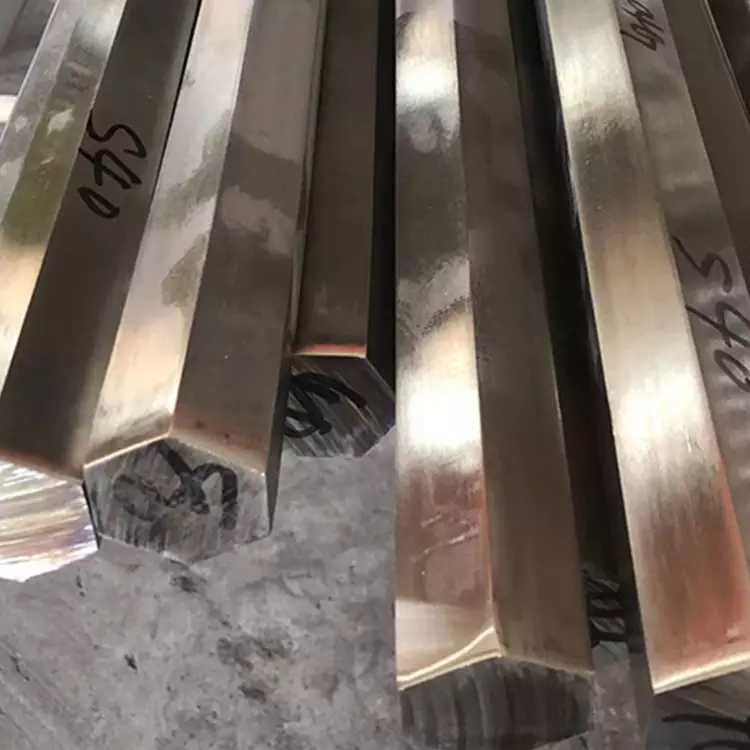When it comes to aluminum solid bars, one of the most versatile and widely used shapes is the aluminum hex bar. With its six-sided profile, excellent machinability, and wide range of alloy options, this product has become an essential material for industries such as aerospace, automotive, machinery, and construction. In this guide, we will explore everything you need to know about aluminum hex bars — from their key properties and applications to specifications, comparison with other aluminum solid bars, and buying tips.
What is an Aluminum Hex Bar?
An aluminum hex bar is a solid aluminum rod with a hexagonal cross-section. Unlike round bars or square bars, its six-sided shape makes it easier to grip with tools, machine into precision parts, and integrate into fastening or structural applications.Compared with other profiles such as aluminum round bar and aluminum square bar, the hexagonal shape offers unique machining advantages.
Hex bars are manufactured through extrusion or forging processes, depending on the alloy and intended use. They are available in different alloys such as 6061 aluminum, 6063 aluminum, 7075 aluminum, 2024 aluminum, and 6082 aluminum, each offering a balance of strength, corrosion resistance, and machinability.
In many industries, aluminum hex bars are preferred for producing bolts, nuts, screws, fasteners, and mechanical components, where both strength and precision are required.
Key Properties of Aluminum Hex Bar
The popularity of aluminum hex bars is due to their unique combination of mechanical and chemical properties:
Lightweight and High Strength
Aluminum alloys provide excellent strength-to-weight ratios. For example, 6061-T6 aluminum hex bar offers high tensile strength while remaining light enough for structural and automotive use.
Corrosion Resistance
Aluminum naturally forms an oxide layer, which protects it against corrosion. Alloys like 6063 and 6082 are especially resistant to environmental exposure, making hex bars suitable for marine and outdoor applications.
Excellent Machinability
Due to their uniform cross-section, aluminum hex bars are easy to cut, drill, and machine into precision components. Alloys like 2011 and 6061 are known for outstanding machinability, making them a common choice for CNC machining.
Weldability and Formability
Most aluminum hex bars can be welded using conventional methods, and alloys such as 6061 or 6063 allow for good formability during secondary processing.
Surface Treatment Compatibility
Aluminum hex bars can undergo various finishing processes such as anodizing, polishing, powder coating, or plating, which improves their durability and appearance.
Standard Sizes and Specifications
Aluminum hex bars are produced according to international standards to meet industrial requirements:
- Diameter Range: Commonly from 3/8 inch (10 mm) to 6 inches (150 mm)
- Length: Typically 12 ft (3.6 m) or custom cut lengths
- Standards:
- ASTM B211 (Standard Specification for Aluminum and Aluminum-Alloy Bar, Rod, and Wire)
- EN 573 / EN 755 (European standards)
- GB/T 3191 (Chinese standard)
- JIS H4040 (Japanese standard)
- Tolerances: Vary depending on alloy and manufacturing process, often within ±0.1 mm to ±0.5 mm
These precise specifications make aluminum hex bars suitable for high-performance industries where tight dimensional accuracy is critical.
Applications of Aluminum Hex Bar
The versatility of aluminum hex bars allows them to serve a wide variety of industries:
Aerospace Industry
Used for aircraft fittings, landing gear components, and structural parts where both lightweight and high strength are crucial.
Automotive and Motorcycle Parts
Hex bars are machined into engine parts, suspension components, and fasteners that demand both durability and machinability.
Construction and Architecture
They are used in decorative trims, support structures, and custom fittings thanks to their corrosion resistance and sleek finish.
Machinery and Manufacturing
Ideal for nuts, bolts, screws, couplings, and shafts where precision machining is essential.
Electrical and Electronics Industry
Certain alloys with higher conductivity are used for electrical connectors, terminals, and electronic housings.
How to Choose the Right Aluminum Hex Bar
Choosing the correct aluminum hex bar depends on several factors:
Alloy Selection
- 6061 aluminum hex bar → Excellent all-rounder with good strength, machinability, and corrosion resistance.
- 7075 aluminum hex bar → Very high strength, commonly used in aerospace and defense but less corrosion-resistant.
- 2024 aluminum hex bar → High fatigue resistance, ideal for aerospace applications.
- 6063 aluminum hex bar → Superior corrosion resistance and surface finish, suitable for architectural use.
Application Needs
- Structural applications → Focus on strength (6061, 7075)
- Outdoor/marine applications → Corrosion resistance is key (6063, 6082)
- Machining applications → Machinability and stability (2011, 6061)
Surface Treatment Requirements
If anodizing or decorative finishing is required, alloys like 6063 or 6082 are better choices.
Aluminum Hex Bar vs Other Aluminum Solid Bars
Aluminum solid bars come in different shapes, and each has its advantages.
| Type | Shape | Advantages | Typical Use Cases |
|---|---|---|---|
| Hex Bar | Six-sided | Easy to machine, ideal for fasteners | Nuts, bolts, couplings |
| Aluminum Round bar | Circular | Good for shafts and load-bearing parts | Automotive shafts, aerospace parts |
| Square Bar | Four-sided | Strong and stable, good for frames | Structural components |
| Flat Bar | Rectangular | Large surface area, easy to weld | Supports, braces, decorative use |
By comparing these shapes, buyers can select the most suitable aluminum solid bar for their application.
Buying Guide for Aluminum Hex Bar
When sourcing aluminum hex bars, consider the following:
Reliable Suppliers
Choose manufacturers with proven quality certifications (ISO 9001, ASTM compliance) and experience in producing aluminum rods and billets.
OEM and Customization
Many industries require custom lengths, machining, or alloy compositions. A supplier offering OEM services ensures you get the right fit for your project.
Quality Testing
Ensure the supplier conducts tensile strength testing, chemical composition analysis, and dimensional accuracy checks.
Packaging and Logistics
For export markets, proper packaging (wooden cases, protective films) is critical to avoid surface damage during shipment.
FAQ – Common Questions About Aluminum Hex Bars
Q1: What are aluminum hex bars used for?
They are widely used in aerospace, automotive, construction, and machinery for producing fasteners, shafts, and structural components.
Q2: Which alloy grade is best for machining?
6061 and 2011 aluminum hex bars are known for superior machinability, making them ideal for CNC parts.
Q3: Can aluminum hex bars be anodized?
Yes, alloys such as 6063 and 6082 anodize well, providing an attractive and durable finish.
Q4: What sizes are commonly available?
Standard diameters range from 10 mm to 150 mm, but custom sizes are available depending on supplier capabilities.
Q5: How does an aluminum hex bar compare to a steel hex bar?
Aluminum is lighter and corrosion-resistant, while steel provides higher strength but is heavier and prone to rust.
Conclusion
The aluminum hex bar is an indispensable material across multiple industries thanks to its lightweight strength, corrosion resistance, machinability, and versatility. Whether you need fasteners, structural components, or precision-machined parts, aluminum hex bars provide a cost-effective and durable solution.
When sourcing aluminum hex bars, always consider alloy selection, application requirements, and supplier reliability to ensure you receive products that meet both technical and commercial needs. By choosing the right aluminum hex bar, you can optimize performance, reduce costs, and achieve long-term success in your projects.If you are looking for aluminum hex bar supplier, or related products such as aluminum square bar and aluminum flat bar, contact our team today for a customized solution.

